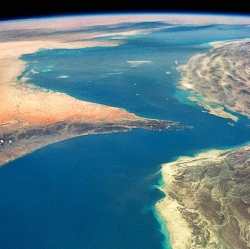
To understand how we came to exist on planet Earth, we’ll need to know how Earth managed to stay fit for life for billions of years.
The first thing is that the Earth could possess something like a thermostat-a feedback mechanism that prevents the climate ever wandering to fatal temperatures.
The second is that, out of a large number of planets, perhaps some just make it through by luck, and Earth is one of those. Astronomical observations of distant stars tell us that many have planets orbiting them, and that some are of a size and density and orbital distance such that temperatures suitable for life are theoretically possible.
Scientists dream that they could travel to these exoplanets to investigate whether any of them have matched Earth’s billion years of climate stability.
But as they are stuck on Earth, they used a computer computer program designed to simulate climate evolution on planets in general, and generated virtual 100,000 planets, each with a randomly different set of climate feedbacks.
Climate feedbacks are processes that can amplify or diminish climate change-think for instance of sea-ice melting in the Arctic, which replaces sunlight-reflecting ice with sunlight-absorbing open sea, which in turn causes more warming and more melting.
In order to investigate how likely each of these diverse planets was to stay habitable over enormous timescales, they were simulated each 100 times. Each time the planet started from a different initial temperature and was exposed to a randomly different set of climate events.
On each of the 100 runs, the planet’s temperature was tracked until it became too hot or too cold or else had survived for three billion years, at which point it was deemed to have been a possible crucible for intelligent life.
It was very rare for a planet to have such strong stabilizing feedbacks that it stayed habitable all 100 times, irrespective of the random climate events.
Most planets that stayed habitable at least once did so fewer than 10 times out of 100. On nearly every occasion in the simulation when a planet remained habitable for three billion years, it was partly down to luck.
Planets that were specially designed to have no feedbacks at all never stayed habitable; random walks, buffeted around by climate events, meant that these planets never lasted the course.
By implication, Earth probably therefore possess some climate-stabilizing feedbacks, but at the same time, good fortune must also have been involved in it staying habitable. More research in understanding the Earths natural climate stabilizing mechanisms will be crucial in understanding the climate as a whole, and this will help in getting a much better idea of how to predict the future of the planet in a changing climate. This way we can determine the future of the environment more by calculation less less by speculation.
